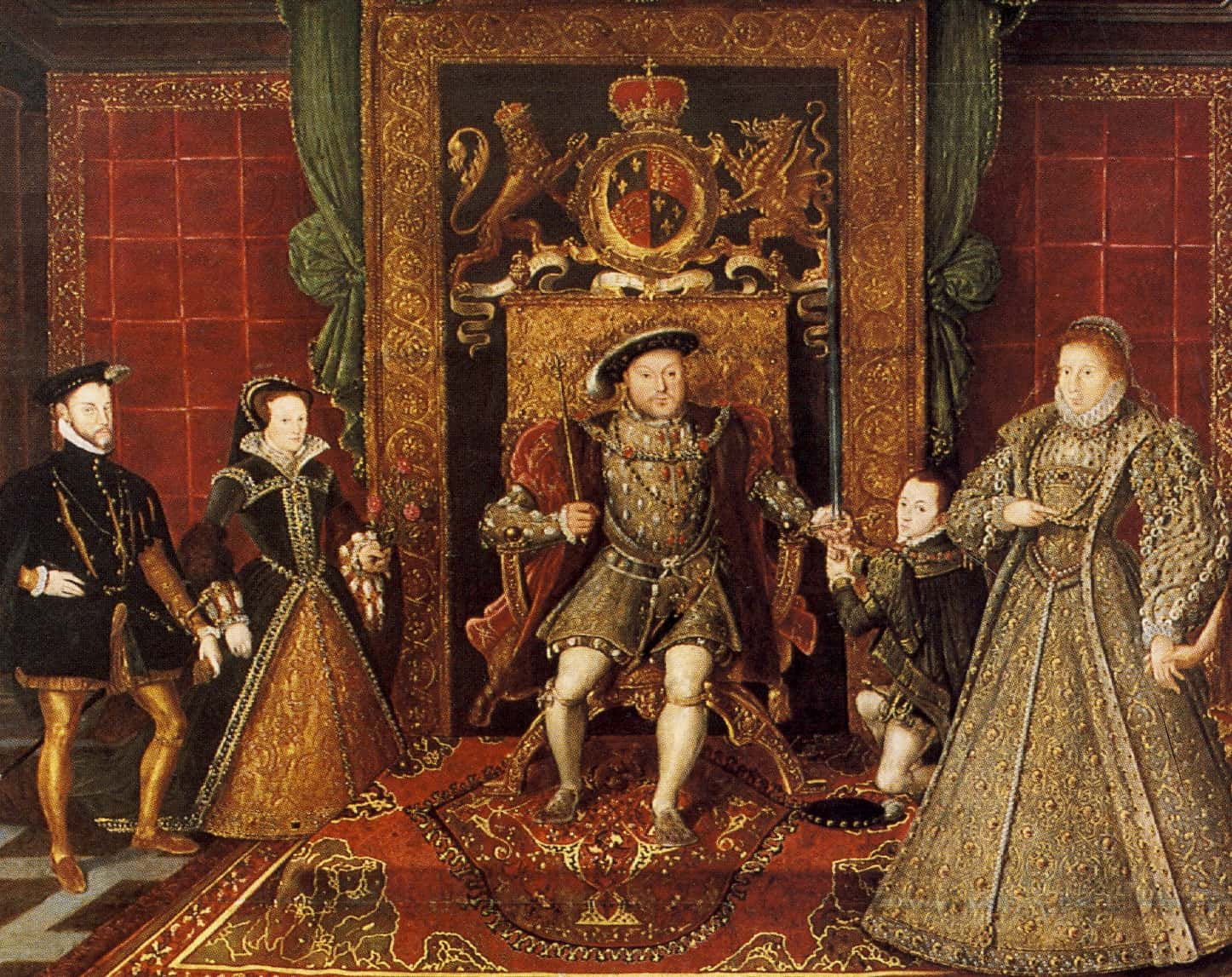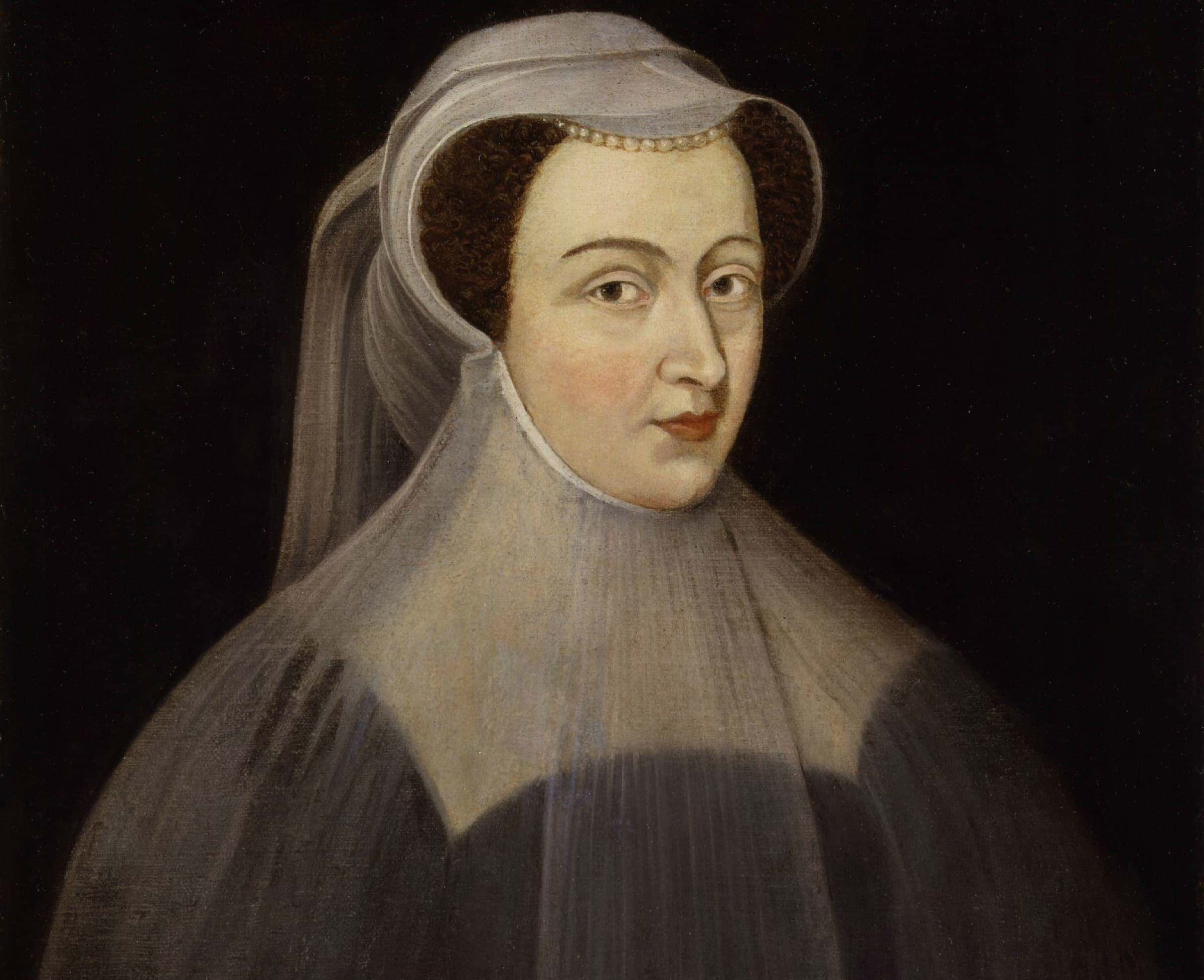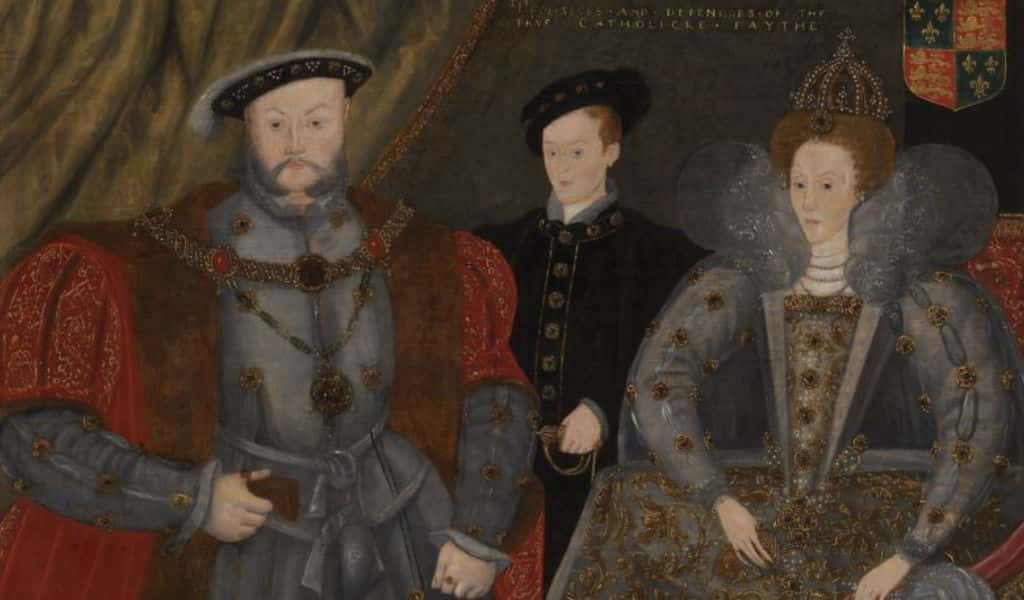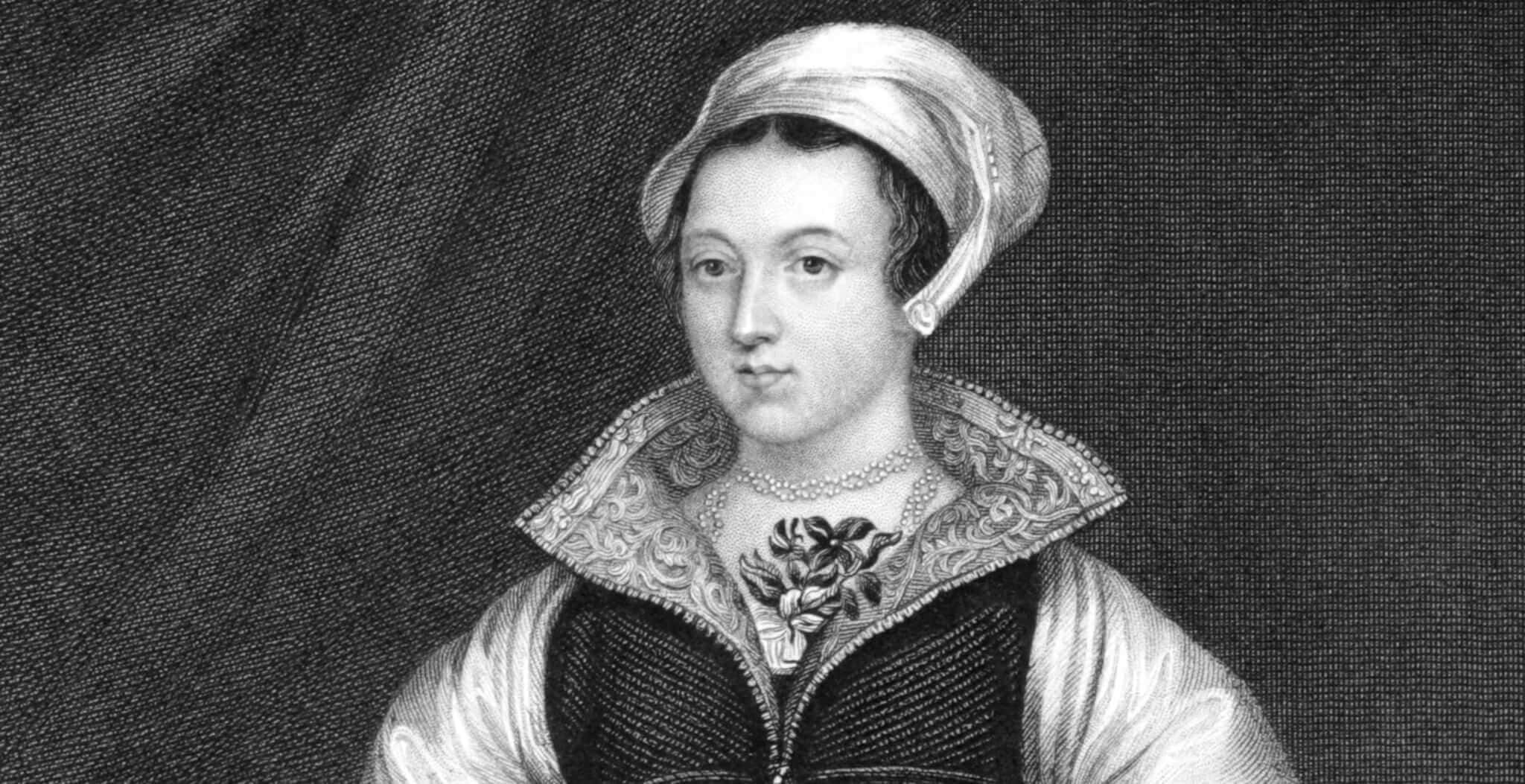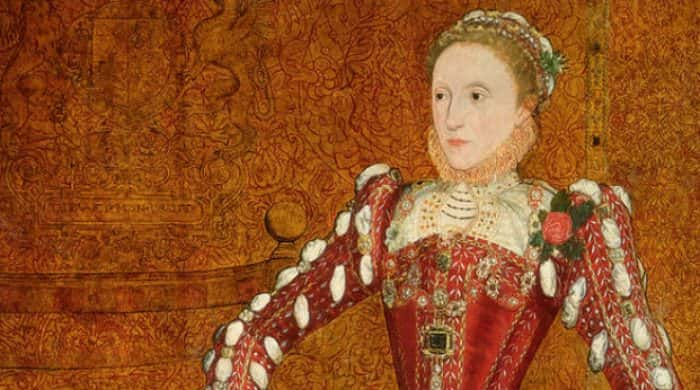“Yes, King Edward VI lived only a few years, poor boy, but he lived them worthily.”—Mark Twain, The Prince and the Pauper.
Edward VI of England was the only surviving son of the infamous Henry VIII. Since Henry literally tore apart churches and dispatched wives in search of that elusive thing called a “male heir,” it’s all the more tragic (or just ironic) that said heir only reigned for six-and-a-half years. Tall, dedicated, and (most importantly) male, Edward should have been the realization of his father’s dynastic dreams. Unfortunately, Edward has only dwindled in the historical shadow of his more glamorous half-sisters, “Bloody” Mary I and “Gloriana” Elizabeth I.
However, one shouldn’t dismiss this boy-king: he was still a Tudor monarch, and where there are Tudors, there is scandal and drama. Which of his uncles was embroiled in a royal animal cruelty scandal? Which American author used Edward in his historical fanfiction? Set the royal jewels to these 42 short-lived facts about Edward VI, the Doomed Son of Henry VIII.
42. Bummer Prologue
Edward’s mother was Henry VIII of England’s third wife, Jane Seymour. Just weeks before their marriage, Henry had executed his second wife, Anne Boleyn, for treason. Henry finally got his healthy male heir from this match, so I guess if you asked him, it was worth it.
41. The Golden Boy
Edward VI was not the “only” son of Henry VIII—he was just the only legitimate one to survive infancy. Edward’s lost brothers included Henry Fitzroy, the illegitimate son of Henry by his mistress, Bessie Blount; Fitzroy died at the age of 17 just one year before Edward was born. By his first queen, Henry also had one legitimate son, Prince Henry, born in 1511, who lived long enough to get an elaborate christening as the Duke of Cornwall. Alas, this kid didn’t live past a few weeks, paving the way for Edward some 26 years later.
40. Old Dads Are More Fun
By the standards of the day (perhaps even our day), Henry VIII was an older father. At the time of Edward’s birth, Henry was already 46 years old.
39. Medically Fit to Rule
For centuries, historians and Tudor fans couldn’t resist the apparent irony of Henry VIII’s longed-for son also being his sickliest child. However, the legend of Edward’s delicate health has been widely discredited. Contemporaries described him as tall and quick-growing. While Edward did suffer from a serious fever at the age of four—and had somewhat bad eyesight—his private journals make no mention of long-term illness until the final six months of his life.
38. You Didn’t Get It From Me
Building the legend of Edward as a sickly prince, some theorists suggested he suffered from life-long tuberculosis. More scandalously, others suggested Edward inherited syphilis in the womb from his father. This has been largely debunked.
37. Third Time’s the Harm
Born at Hampton Court Palace on October 12, 1537, Edward was the first and only child of Jane Seymour, Henry’s third wife and queen. Jane was the first wife to give Henry a son who lived beyond a few weeks. Unfortunately, Jane never got to enjoy the spoils of her victory; she died of complications from childbirth just 11 days later.
36. Stranger Than Fiction
Edward may have died young, but thanks to Mark Twain, he’ll live forever in the novel The Prince and the Pauper. In this historical fanfic, Edward trades places with a common boy named “Tom Canty” who looks exactly like himself. The book draws from real life by ending with Edward dying at the age of 15, but we learn that the last years of his reign were peaceful due to the king’s new empathy for those pesky poors. If only the Protestant Reformation ended so quietly.
35. My Sister, My Mother
Edward’s godmother was his own 21-year-old half-sister, Mary Tudor. Despite their church-bound duty to each other, Catholic Mary and Protestant Edward’s religious opinions would destabilize their later sibling relationship.
34. Can Never Be Too Careful
To no one’s surprise, King Henry cherished his only son as “this whole realm’s most precious jewel.” And this jewel needed to be kept in top-condition; Henry demanded Edward’s house be kept in the highest standards of security and cleanliness. Swaddled in toys and “minstrels,” for all his early life, it was good to be Henry VIII’s only prince.

History's most fascinating stories and darkest secrets, delivered to your inbox daily.
33. Childhood Sweethearts They Were Not
One of Edward’s earliest would-be queens was Mary, Queen of Scots. After the death of the old Scots king, Henry signed the Treaty of Greenwich in 1543, which would have secured Scotland as part of the English empire via betrothing the baby Mary, Queen of Scots to the young Prince Edward. Unfortunately for Edward, the Scots turned around on the deal. England’s retaliatory attacks on Scotland would be known as “The Rough Wooing.”
32. Your GPA Vs. Your Sister
Edward had a robust education befitting a Protestant prince, with all the languages, statecraft, and philosophical knowledge taught to him by leading Protestant scholars Richard Cox and John Cheke. What’s interesting is that he also shared tutors and lessons with his sister, the future Elizabeth I. It’s said he worked hard to compete with Elizabeth academically…as his “duty,” of course.
31. Mother From Another Marriage
Of his many stepmothers, Edward was closest to the last one: Catherine Parr. He once wrote to Parr, “I received so many benefits from you that my mind can hardly grasp them.” Parr is considered instrumental in bringing the much-fraught the royal family together.
30. Remember to Share
In 1543, Henry VIII restored Edward’s older half-sisters back into the line of succession. Mary and Elizabeth would follow their brother to his throne—but it was a decision that Edward would later discredit on his deathbed.
29. Style Runs in the Family
As a child, Edward modeled his fashion decisions after his father. The prince wore a jewel-hilted dagger made of gold, just like the swag of dear old dad.
28. A Domestic Dance Policy
Edward once took it upon himself to critique his sister Mary’s taste for foreign dance crazes. Nevertheless, he softened his disapproval by reminding Mary, “I love you most.”
27. Part-Timer
Edward VI ascended when he was only nine years old. His father King Henry passed away on January 28, 1547, and Edward was officially crowned the next month. As if to highlight his age, the coronation was shorter than most, as people feared the long and boring procedures would be too taxing on their child-king.
26. The Penny-Pinching King
Edward VI has been compared to his grandfather, Henry VII. In contrast to drama king Henry VIII, both Edward VI and Henry VII preferred policies of economic austerity, much to the chagrin of a people who looked to the monarchy for pomp and pageantry.
25. A Tough Act to Follow
At Edward’s coronation, the Archbishop Thomas Cranmer declared Edward to be the “Second Josiah.” Josiah was a momentous figure in Biblical history for his institution of religious reform. Accordingly, Edward’s reign was expected to welcome a new wave of even more radical Protestant reforms to the Church of England established by his father.
24. Count on Us
Since he was a child, the vast majority of Edward’s ruling was done by his Council of Regency. These men were almost exclusively of the Protestant faction, and they awarded themselves massive land grants and titles to befit their new station. They were led by the new king’s uncle, Edward Seymour, Earl of Hertford, who elevated himself to the Duke of Somerset. Seymour was also entrusted as Lord Protector of the Realm and Governor of the King’s Person.
23. Let’s Ignore That
Henry’s will bequeathed Edward’s regency to no single “Protector.” Instead, the council was to be governed by vote amongst esteemed members, none of whom would be “in charge.” Obviously, with many rich dude egos in the mix, Henry’s wishes did not come to practice.
22. I’m the Cool Uncle
From early into his reign, Edward was caught in the middle of a power struggle between his two maternal uncles, Lord Protector Edward Seymour and his younger brother Lord Thomas Seymour. Thomas wanted a bigger share of power in the Council. Thus, he played the “fun uncle”; he smuggled gifts of money to the boy-king, making Uncle Ed look like the stick-in-a-mud and telling the boy how the Lord Protector was turning Edward into a “beggarly king.”
 Total War: Alternate Reality Wiki
Total War: Alternate Reality Wiki
21. Seal of Approval
Edward’s widowed stepmother Catherine Parr made a scandalous early marriage to the new king’s uncle, Thomas Seymour. However, Edward’s favor toward Catherine and Thomas let them get away with it. The king wrote a letter of approval about their marriage—though it was obviously dictated by Uncle Thomas for the little boy to write out.
20. Can’t He Just Die?
Edward showed signs that he chafed under his Lord Protector’s authority. The boy admitted that it might be better for the Duke of Somerset to just “die.” Most think Edward uttered this death wish innocently, like 10-year-old orphans sometimes do.
 Public Domain Pictures
Public Domain Pictures
19. Old Enough to Know His Boundaries
Eventually, Thomas Seymour overplayed how much Edward favored his younger uncle. Edward was presented by Thomas with a bill, one which would have made Thomas Seymour the king’s Personal Governor, thereby circumventing Edward Seymour’s power. Even at 10 years old, Edward felt he was being manipulated and managed to put off signing it, much to Thomas’s impatience.
18. In the Doghouse
The Seymour power struggle for King Edward climaxed with attempted child abduction and dog murder. By 1548, it was openly known that Thomas was leveraging his position as Lord High Admiral to gain navy allies in case of rebellion against the king’s council. He did not show up to a hearing about his conduct. Instead, he showed up in the king’s bedroom at night to apparently kidnap the boy and control the monarchy. Unfortunately, all Thomas managed to do was shoot one of Edward’s precious dogs, thereby alerting the guards. Thomas was accordingly tried and executed for treason.
17. I Guess Blood Isn’t Thicker Than Water
Despite Edward’s early fondness for Thomas Seymour, the little king apparently showed no emotion as he signed his uncle’s death warrant. Can we blame him? The guy did shoot his dog.
16. So Close to Getting Too Close
The second marriage prospect in Edward’s life was his own cousin once removed, Lady Jane Grey. One of the charges against his condemned uncle Thomas Seymour was plotting to marry the king to Jane, who was his young ward at the time.
15. Protesting the Protest
The late 1540s were a socially restless time for both Edward’s reign and for England. Part of this unrest was due to radical Protestant reforms. What became known as the “Prayer Book Rebellion,” for instance, broke out with the Book of Common Prayer’s 1549 introduction. The imposition of English-only worship across the country countered Catholic beliefs that were still strongly held in counties from Devon to Cornwall. Paired with the rising economic insecurity of the country, things did not look good for Edward’s grand Protestant vision.
14. Are We There Yet?
Just like his little brother, Edward Seymour might have overplayed his ability to influence his nephew. In 1549, the Prayer Book Rebellion had brought Seymour’s leadership abilities into question—by both the council and Edward himself. The council had enough of Seymour’s leadership, and sensing an impending coup, Seymour secured his own safety by securing himself with the king in Windsor Castle. Like many 12-year-olds would do, King Edward chafed at being a human shield and sulked in his journal, “Methinks I am in prison.”
13. Say Uncle
In October 1549, the Lord Protector Edward Seymour was overthrown by the rest of Edward’s regency council and later executed for felony in January 1552 on separate charges. Edward grieved little for his other disgraced uncle. His diary bluntly lists the charges against Seymour as “ambition, vainglory, entering into rash wars in mine youth, negligent looking on Newhaven, enriching himself of my treasure, following his own opinion, and doing all by his own authority, etc.,” and on the date of Seymour's beheading, Edward only recorded “the duke of Somerset had his head cut off upon Tower Hill between eight and nine o'clock in the morning.” Ice cold.
12. Second-in-Command
After Edward Seymour, the leader of Edward’s regency council for the rest of his reign was John Dudley, the Duke of Northumberland. Perhaps taking note from the Seymours’ backfired eagerness to control Edward, Northumberland granted the boy more direct political responsibilities under his care. This is signaled by how the duke did not take up Seymour’s open title of “Lord Protector,” although he was obviously the chief of government.
11. Sealed With a Bank Note
In 1551, Edward was betrothed to the French princess, Elisabeth of Valois (daughter of Henri II of France and Catherine de Medici). Peace with the French was financially necessary at this point; England was in dire economic straights and could no longer cover the cost of its wars.
10. Anyone But Her
By February 1553, Edward’s health was in critical condition. The teen was clearly not going to marry and father an heir anytime soon, but his heir was his Catholic half-sister, Mary Tudor. This would not do for the all-Protestant council. As a devout Protestant, Edward himself opposed Mary’s ascension.
9. Hello Darkness, My Old Friend
By the end of his life, Edward lost the ability to walk; the king’s legs were so swollen that he had to lie on his back all day. A realistic child to the end, Edward was ready to get it over with and told his tutor, “I am glad to die.” He passed away at Greenwich Palace on July 6, 1553—three months shy of his 16th birthday.
8. The Second Blow
Edward might have survived his fatal 1553 bout with tuberculosis if he'd been a bit stronger. But in 1552, he battled with smallpox and measles; it’s believed this wrecked his royal immune system and left him vulnerable to further infection.
7. Miss This Sis
To remedy his nightmare of England going Catholic if Mary were crowned, Edward changed his father’s will. He amended his father’s inclusion of half-sisters Mary and Elizabeth in the succession and used their legal illegitimacy and their gender as grounds for exclusion. To put it bluntly, Edward barred his mostly-beloved sisters from inheriting the throne.
6. Girls Allowed Eventually
On his deathbed, Edward skipped over his sisters to give the throne to the male heirs of his relatives, the Greys. However, at this stage, there were no other living male Grey-Tudors to inherit his throne. Since sons take at least 9 months to make, and Edward wouldn’t live that long, he relented and allowed the Grey women to inherit the throne themselves.
5. Game of Pawns
Conveniently, Edward’s declarative heir, Jane Grey, was the daughter-in-law of Regency Council Leader John Dudley. The changes to the succession were met with considerable protest from other statesmen, but Dudley insisted upon them (some say angrily). Regardless of how much Dudley manipulated a dying Edward into surrendering the throne, the 15-year-old boy at least did not seem coerced. He died probably fully confident in his act to skip over his sisters to ensure a Protestant succession.
4. The 60-Second Successor
Edward’s dying request went bust, and Jane Grey was largely resisted as Queen of England. His sister Mary waged her own forces to challenge Jane’s accession, which is why Jane is the “Nine Days Queen” instead of the “Long Lasting Queen So Spake Edward VI Who’s Too Dead To Do Anything About It Now.” For a time, Edward’s nightmare came true and England “enjoyed” a four-and-half-year return to Roman Catholicism under Mary I.
3. Thanks for the Tip, Bro
When his half-sister Elizabeth I ascended to the throne in 1558, her religious policies built upon the foundations left behind by Edward VI. Although she disregarded the “internationalist” focus of his religious policy in favor of a more nationalist religious model, Elizabeth nonetheless staffed the bishoprics with many ex-Edwardian councilors.
2. Blaze It
The inscription above the grave of Edward’s mother laments her death, but it also celebrates her sacrifice to give Henry VIII his heir: “Here lieth a Phoenix, by whose death / Another Phoenix life gave breath: / It is to be lamented much / The world at once ne’er knew two such.”
1. Mourning Buddies
Edward and his sister Elizabeth were together when they were informed of their father’s death. The siblings apparently cried into each other’s arms when faced with their new life as true orphans. However, Edward’s journal would admit no hurt or personal reflection at the death.




